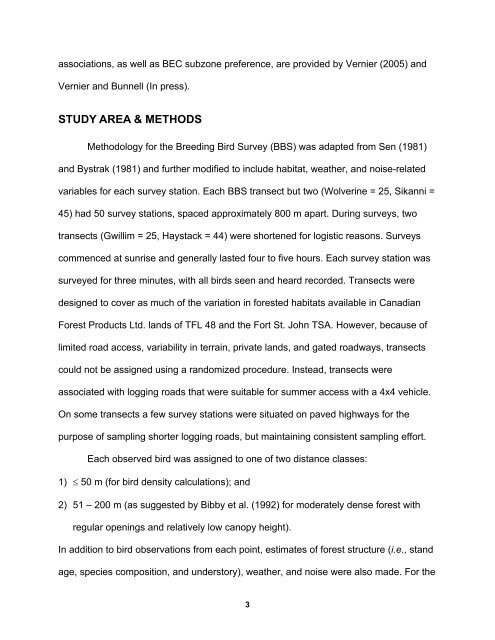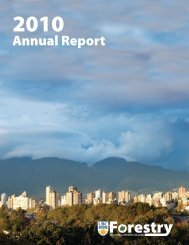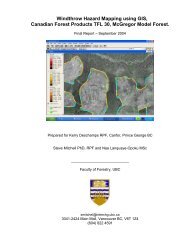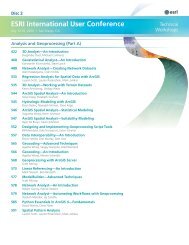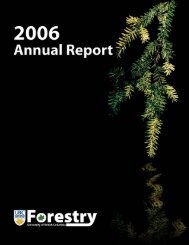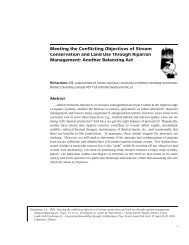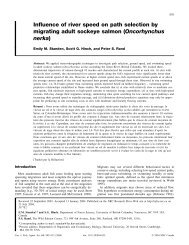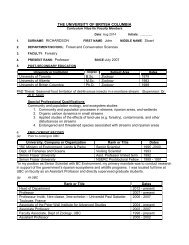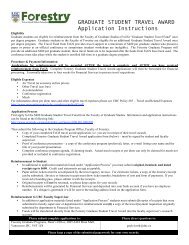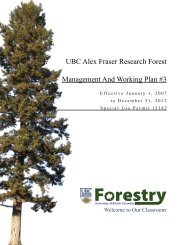A Four-year Summary of Breeding Bird Surveys in TFL 48 ... - BIOD
A Four-year Summary of Breeding Bird Surveys in TFL 48 ... - BIOD
A Four-year Summary of Breeding Bird Surveys in TFL 48 ... - BIOD
You also want an ePaper? Increase the reach of your titles
YUMPU automatically turns print PDFs into web optimized ePapers that Google loves.
associations, as well as BEC subzone preference, are provided by Vernier (2005) andVernier and Bunnell (In press).STUDY AREA & METHODSMethodology for the <strong>Breed<strong>in</strong>g</strong> <strong>Bird</strong> Survey (BBS) was adapted from Sen (1981)and Bystrak (1981) and further modified to <strong>in</strong>clude habitat, weather, and noise-relatedvariables for each survey station. Each BBS transect but two (Wolver<strong>in</strong>e = 25, Sikanni =45) had 50 survey stations, spaced approximately 800 m apart. Dur<strong>in</strong>g surveys, twotransects (Gwillim = 25, Haystack = 44) were shortened for logistic reasons. <strong>Surveys</strong>commenced at sunrise and generally lasted four to five hours. Each survey station wassurveyed for three m<strong>in</strong>utes, with all birds seen and heard recorded. Transects weredesigned to cover as much <strong>of</strong> the variation <strong>in</strong> forested habitats available <strong>in</strong> CanadianForest Products Ltd. lands <strong>of</strong> <strong>TFL</strong> <strong>48</strong> and the Fort St. John TSA. However, because <strong>of</strong>limited road access, variability <strong>in</strong> terra<strong>in</strong>, private lands, and gated roadways, transectscould not be assigned us<strong>in</strong>g a randomized procedure. Instead, transects wereassociated with logg<strong>in</strong>g roads that were suitable for summer access with a 4x4 vehicle.On some transects a few survey stations were situated on paved highways for thepurpose <strong>of</strong> sampl<strong>in</strong>g shorter logg<strong>in</strong>g roads, but ma<strong>in</strong>ta<strong>in</strong><strong>in</strong>g consistent sampl<strong>in</strong>g effort.Each observed bird was assigned to one <strong>of</strong> two distance classes:1) ≤ 50 m (for bird density calculations); and2) 51 – 200 m (as suggested by Bibby et al. (1992) for moderately dense forest withregular open<strong>in</strong>gs and relatively low canopy height).In addition to bird observations from each po<strong>in</strong>t, estimates <strong>of</strong> forest structure (i.e., standage, species composition, and understory), weather, and noise were also made. For the3


